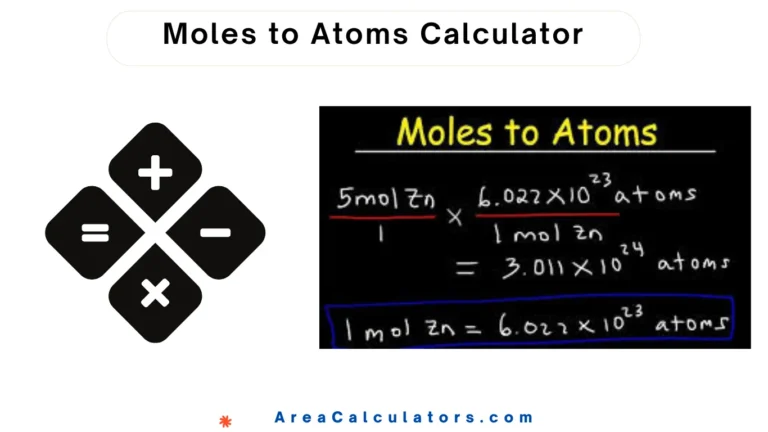Not all light produced by a lamp ends up brightening your space.
Sometimes, a portion of the light is lost—trapped inside the fixture or absorbed by surfaces. That’s where the Light Output Ratio Calculator becomes essential. It shows you how efficient a lighting system really is by comparing the light emitted to the light produced.
Whether you're into lighting design, energy-saving setups, or just making your home or office brighter, this tool tells you the truth about your lights.
What Is a Light Output Ratio Calculator and Why It’s Important
The Light Output Ratio Calculator measures the efficiency of a lighting fixture. It compares the total light output from the fixture to the light output from the lamp itself.
The result is a percentage — how much light is effectively being used.
Why does this matter?
-
It helps identify inefficient fixtures
-
It supports energy-saving lighting design
-
It ensures you're getting value for your lighting investment
-
It aids in green building certifications or energy audits
Simply put, it tells you how much light you get out of what you put in.
Basic Formula and Variables (Explained Clearly)
Contents
Here’s the formula used in the calculator:
LOR (%) = (Luminous Flux from Fixture ÷ Luminous Flux from Lamp) × 100
Variable Table
| Variable | Explanation |
|---|---|
| Luminous Flux from Fixture | Actual light leaving the fixture (in lumens) |
| Luminous Flux from Lamp | Total light produced by the lamp inside the fixture (in lumens) |
| LOR (%) | Light Output Ratio in percentage (%) |
Example:
If a fixture emits 700 lumens and the lamp inside produces 1000 lumens:
LOR = (700 ÷ 1000) × 100 = 70%
This means 70% of the lamp’s light is effectively reaching your space.
Why Light Output Ratio Matters
Here’s why LOR is a critical lighting metric:
✅ Shows real-world performance — not just the spec-sheet values
✅ Helps reduce power waste
✅ Improves lighting layout efficiency
✅ Supports green certifications (LEED, BREEAM, etc.)
✅ Helps choose the best fixture for your purpose
It’s not just about brightness—it’s about usable brightness.
Where This Calculator Is Commonly Used
You’ll find this calculator being used in several fields:
-
💡 Architectural lighting design
-
🏢 Office and commercial lighting audits
-
🏗 Construction and building management
-
🧪 Lighting product development
-
🏠 Home energy optimization
-
🌍 Sustainable energy planning
If lighting matters, this metric matters too.
Step-by-Step: How to Use the Calculator
-
Find the luminous flux from the lamp
This is often provided by the manufacturer in lumens. -
Measure or get the luminous flux from the fixture
Some fixtures list this; others require photometric data. -
Enter both values into the calculator
Use the formula manually or a digital tool. -
Get your LOR result in %
A higher percentage means better efficiency.
Tips for More Accurate Results
✅ Use reliable photometric data
✅ Ensure measurements are taken at the same settings
✅ Don’t estimate lumen values—use precise numbers
✅ Include all lamps if the fixture has more than one
✅ Take measurements in a neutral (non-reflective) environment if testing manually
These tips can make your results much more meaningful.
Mistakes to Avoid During Calculation
❌ Confusing lux with lumens – Only use lumens
❌ Using wrong lamp data – Match the exact lamp used in the fixture
❌ Ignoring reflectors and diffusers – They affect output
❌ Measuring after fixture degradation – Use factory-condition data
❌ Forgetting to convert units if needed – Stick to lumens
Avoiding these will keep your readings accurate and reliable.
FAQs:
1. What is a good Light Output Ratio?
Generally, above 80% is efficient. Below 60% may suggest a poor fixture design.
2. Is LOR used in home lighting?
Yes, especially in energy-efficient planning and smart home setups.
3. Can LOR improve energy savings?
Absolutely. Higher LOR fixtures need less energy to achieve the same brightness.
4. Is LOR affected by fixture design?
Yes. Reflectors, diffusers, and shapes can all influence LOR.
5. Does LOR apply to LEDs?
Yes, though LED fixtures often have higher LORs due to better design integration.
6. How is LOR different from luminous efficacy?
LOR measures fixture efficiency, while efficacy measures lamp efficiency (lumens per watt).
Conclusion:
The Light Output Ratio Calculator is your tool for smarter, cleaner, and more effective lighting. It doesn’t just tell you how bright something is—it tells you how efficiently that brightness is being used.
Whether you're designing a home, auditing a building, or working on lighting projects, this calculator gives you the insight to make confident, cost-saving choices.
So the next time you choose a fixture, check its LOR. It might brighten more than just your room—it might brighten your energy bill too.




